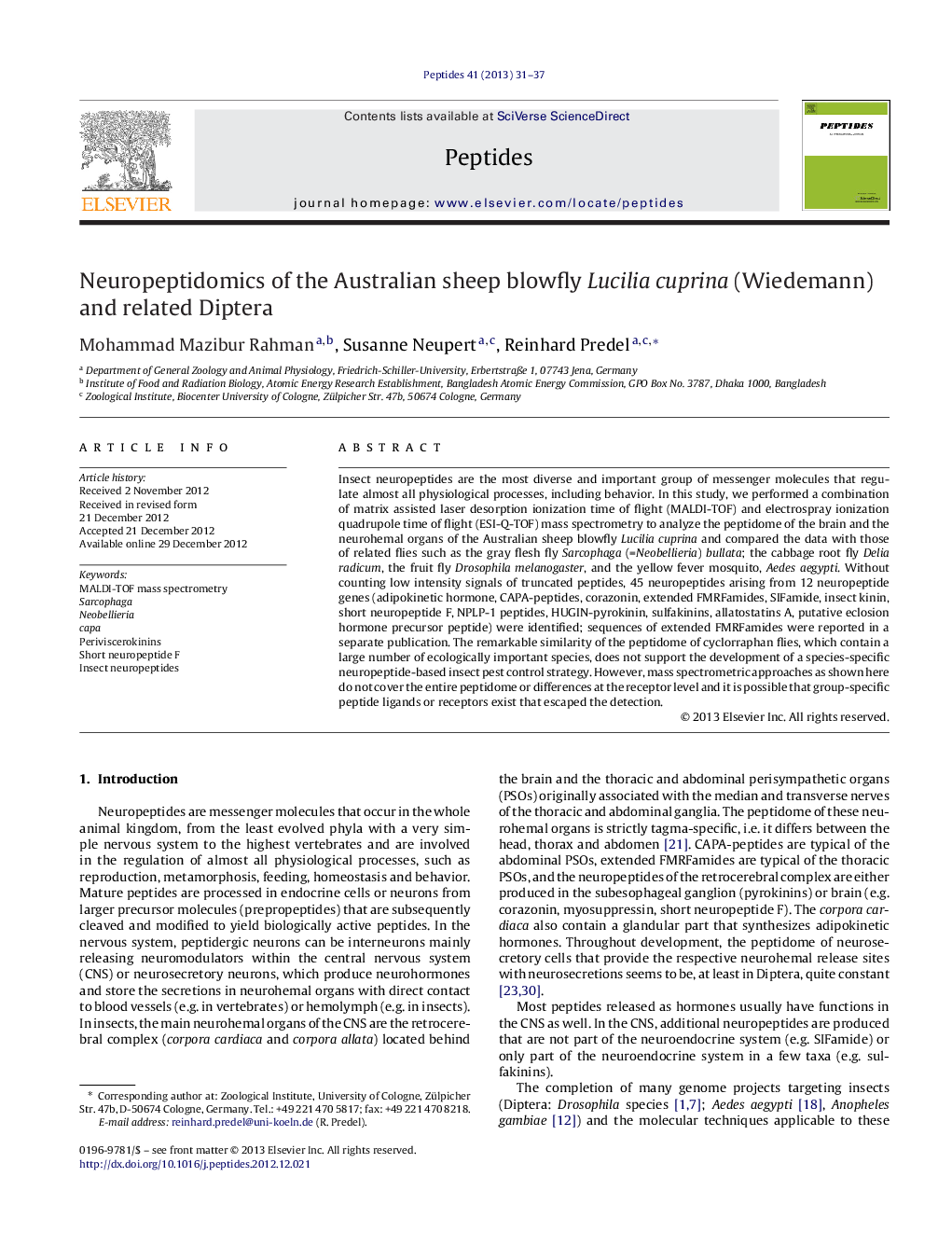| Article ID | Journal | Published Year | Pages | File Type |
|---|---|---|---|---|
| 2006221 | Peptides | 2013 | 7 Pages |
Insect neuropeptides are the most diverse and important group of messenger molecules that regulate almost all physiological processes, including behavior. In this study, we performed a combination of matrix assisted laser desorption ionization time of flight (MALDI-TOF) and electrospray ionization quadrupole time of flight (ESI-Q-TOF) mass spectrometry to analyze the peptidome of the brain and the neurohemal organs of the Australian sheep blowfly Lucilia cuprina and compared the data with those of related flies such as the gray flesh fly Sarcophaga (=Neobellieria) bullata; the cabbage root fly Delia radicum, the fruit fly Drosophila melanogaster, and the yellow fever mosquito, Aedes aegypti. Without counting low intensity signals of truncated peptides, 45 neuropeptides arising from 12 neuropeptide genes (adipokinetic hormone, CAPA-peptides, corazonin, extended FMRFamides, SIFamide, insect kinin, short neuropeptide F, NPLP-1 peptides, HUGIN-pyrokinin, sulfakinins, allatostatins A, putative eclosion hormone precursor peptide) were identified; sequences of extended FMRFamides were reported in a separate publication. The remarkable similarity of the peptidome of cyclorraphan flies, which contain a large number of ecologically important species, does not support the development of a species-specific neuropeptide-based insect pest control strategy. However, mass spectrometric approaches as shown here do not cover the entire peptidome or differences at the receptor level and it is possible that group-specific peptide ligands or receptors exist that escaped the detection.
► The Australian sheep blowfly Lucilia cuprina is a widespread pest species that severely affects the dry fish industry in developing countries. ► The peptidome of the CNS and the CNS-associated retrocerebral complex and abdominal perisympathetic organs was analyzed in larval and adult L. cuprina. ► The data presented give no conclusive hint for the development of peptidomimetics that would affect only Lucilia but not related flies.
